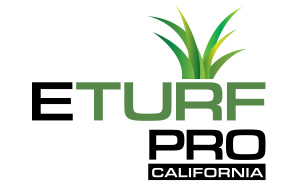Can You Install Artificial Turf on Real Grass
Parts of southern California, such as Los Angeles, still need to preserve more water as they have barely made an impact since 2020. This is why artificial lawns are a good choice.
More people in the county are considering switching to artificial turf. But some have thriving natural lawns that would need replacing.
When laying artificial turf in an area where the grass is dominant, it is a common belief that you must get rid of the surface before proceeding. So, can you install artificial turf on natural grass without any removal work?
The answer is yes. However, proper preparation is essential to a durable and ideal lawn you and your family can enjoy for years.
Why Install Artificial Turf on Real Grass?
Laying artificial turf is a significant investment. But some homeowners avoid artificial grass because of the conflict with natural grass. Still, there are a couple of reasons why installing artificial turf on your grass could be an ideal option.
Saves Time
Because you will not have to strip your landscape to lay your turf, you will save a reasonable amount of time.
Whether working alone or with a professional service provider, you will probably save a few days not relocating wires or removing grass.
Saves Money
Because preparing land for your artificial turf installation can be costly, you will save money on this. With the right installation company, you will stay within your budget with no surprise costs.
Issues With Laying Artificial Turf on Real Grass
While installing artificial turf on grass has advantages, it does not always mean it is a good idea. Similarly, you may not be pleased with the results due to various issues. Learn below some of the shortcomings of applying artificial turf on natural grass.
Persistent Weed Problem
By applying artificial turf on natural grass, especially without a good weed barrier, you are likely to expect weeds or grass to grow through synthetic turf backing. As a result, you will be forced to spend more time and money on your newly installed artificial turf, uprooting weeds, and buying chemicals to kill the weed.
Drainage Issues
Proper land preparation is crucial if your synthetic turf installation performs well. Simply laying your turf over natural grass is not proper ground preparation.
Therefore, most people who stall synthetic turf on natural grass face drainage issues when watering their turf or when it rains. Water accumulation on your artificial turf will leave it looking flawed and cause your artificial turf to age prematurely.
Uneven Surface
Due to the compacting effect of your new artificial grass, most of the natural grass beneath will die. And the remaining grass will strive to survive and find its way through the backing material, all of which will compact while using your lawn.
As a result, this results in an uneven surface, which can lead to enhanced tripping hazards and a yard that’s less appealing to the eye.
Reduced Lifespan
Installing artificial turf over an existing lawn allows skipping crucial steps imperative to the lawn’s longevity and integrity.
By skipping steps such as adding base materials, compacting the sub-base, and ensuring proper drainage, leveling, or grading, there is no way to ascertain precisely how your newly installed artificial grass may respond with time.
Artificial turf installed without paying attention to the entire ground preparation steps will not perform similarly to a well-installed artificial turf and is not expected to last long.
Tips For Easy and Effective Installation
It is prudent that you prepare your ground before installing your new synthetic grass so that it serves you for many years to come.
Due to the many issues related to laying fake grass over natural grass, installing artificial grass over real grass is certainly not the right thing to do.
There is a high chance of weed growing through, creating an uneven, distasteful surface. A leveled and fully cleared surface with proper drainage is the way to go if you want your artificial turf to serve you for many years. That means you’ll have to remove your existing lawn.
Here are tips for installing artificial turf over natural grass.
Prepare the Groundwork
This is the most vital step in installing artificial grass over natural grass. Ensure no pipes or cables are delivering important services to your yard that may be damaged during the groundwork process. Also, check to ensure the area to be turfed has adequate drainage.
Safely Kill Existing Grass
Next, you will want to remove the existing lawn and apply a generous weed killer, so you have a good chance of not seeing weeds through your artificial grass.
You can also dig out old grass. But you must dig out a minimum of four inches of topsoil to ensure you get all the roots.
Prepare a Compact Substrate
You can lay synthetic turf directly on the ground. However, it will not resemble a lawn due to the small depressions and bumps that will be evident and distracting. Experts recommend laying a four-inch base of class-2 road base or anything similar, then squeezing it to a solid surface.
It is prudent to follow this up with at least half an inch layer of decomposed granite or compacted sand to provide smooth underlay for the turf.
Cut Somewhat Long Edges
After laying your artificial turf, you will have to trim the edges. We recommend using a utility knife and trimming from the back.
It is, however, important to leave some additional inches on the turf’s edges to tuck against walkways or beneath borders. You can use a knee kicker to stretch the grass and eliminate wrinkles and loose areas.
Bottom Line
You can install artificial turf over the lawn, but we do not recommend it. You will get the most out of your synthetic turf by removing your existing natural lawn and letting professionals handle the remaining steps for proper drainage and an even, level surface.
We provide high-quality artificial lawn installations for residents of Los Angeles. LA residents need to trim water usage; an artificial lawn goes well with that. Remember to call us for the transition instead of placing it on your natural grass.


